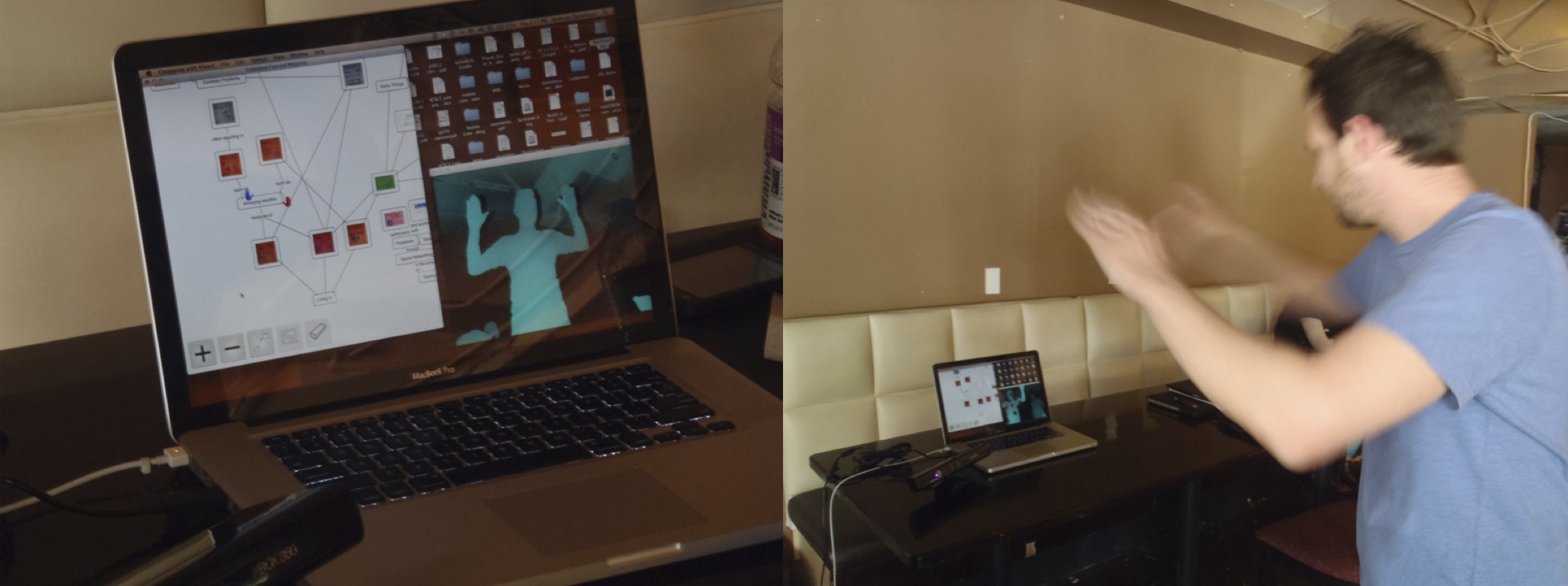
Creating learning experiences that are meaningful and motivational is crucial in learning, and organizing ideas via concept maps allows students to view prior knowledge with new perspectives. In recent years, embodied computation–the control of digital technology with gestures– has emerged as a novel way to meet educational objectives through intuitive control and associating knowledge with physical events. Unfortunately, a majority of systems that incorporate embodied interaction are expensive prototypes, which makes using them in K-12 classrooms challenging.
However, affordable depth cameras like the Microsoft Kinect controller have recently brought embodied interaction to an increasing number of households, allowing users’ bodies to “become” controllers. With this in mind, my colleagues and I worked to develop a low cost system that provided embodied interaction with a computer and depth camera, through which learners could create concept maps with gestures. We defined intuitive gestural controls, and evaluated the system’s potential effectiveness in a classroom setting. The ultimate aim was to create opportunities to easily and affordably incorporate embodiment into collaborative learning.
.
You can more about the project in the following paper:
Danielescu, A., Savio-Ramos, C., & Sadauskas, J. (2013). Constructing an Embodied Interaction for Concept Mapping. In C. Stephanidis (Ed.), Proceedings of the 15th International Conference on Human-Computer Interaction (HCII 2013), Posters, Part II, CCIS 374 (pp. 23–27). Las Vegas, NV, USA: Springer. doi:10.1007/978-3-642-39476-8_5
You must be logged in to post a comment.